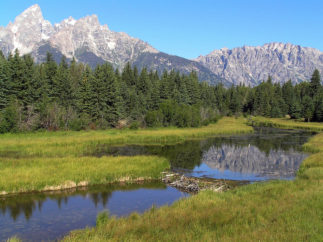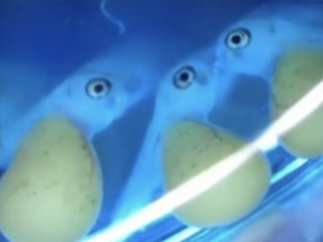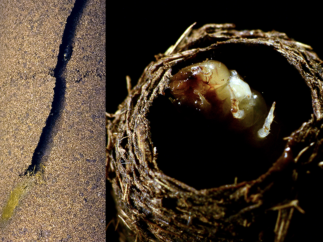The principle of evolution by natural selection provides a solid conceptual tool to understand adaptive design. It operates like a ratchet, to retain and build upon functional variation. Pull down, ‘click’! Variation. Hold tight, lock it! Retention and differential fitness. Push up! Inheritance, and ratchet your way up towards peaks in the adaptive landscape. As this process is repeated over phylogenetic time, the organism-environment complementarity will tend to get tighter and tighter, often leading to enhancements in the properties of adaptations.
Pleiotropy allows the evolutionary maintenance of positive niche construction in the face of free-riders
In our paper published recently in American Naturalist, we used mathematical models to help us understand how positive niche construction can be maintained. Many animals, plants and other organisms engage in niche construction, that is, they modify the environment and the subsequent selective pressures to which they are exposed. Positive niche construction occurs when organisms modify the environment to their advantage; for example, beavers create dams to provide shelter and other benefits. So-called free-riders can emerge who don’t contribute to the costly niche construction but still benefit from the niche-constructing activities of others. This raises an evolutionary problem of how positive niche construction can emerge and be maintained if it is constantly challenged by free-riders.
Conference on Complex Systems 2018
23-28 September 2018
What’s hiding in Waddington’s epigenetic landscape? A case study in baby cichlids
In his 1957 book entitled The Strategy of the Genes, British scientist Conrad Hal Waddington noted that the genetic sequence does not map directly onto the phenotype we can observe in nature. Contrary to the gene-centric views held by many of his contemporaries, Waddington emphasised that phenotypes ultimately depend on the interaction between genes and an array of often environment-sensitive developmental factors he labelled as ‘epigenetic’.1,[*] Using Waddington’s famous ‘epigenetic landscape’ metaphor, the process that connects genotype to phenotype can be described as travelling downhill through a series of valleys from a starting point at the top of the landscape. Some valleys are deep and narrow, which means that the ultimate phenotype will be robustly produced across a wide range of rearing environments. In other cases, the directing landscape is flat and can lead to a variety of end points (i.e. different phenotypes) because the development of a trait is sensitive to environmental influences, often mediated by epigenetic factors.2 Waddington went on to propose that epigenetic factors could play a role in evolution, by allowing organisms to adjust to environmental conditions. Such adaptive phenotypes are subsequently stabilised through selection on genetic variation,3 a hypothesis now known as ‘plasticity-first’ evolution.4
La plasticità comportamentale e di sviluppo consentono agli scarabei stercorari di far fronte allo stress termico nel corso di generazioni
di Anna LM Macagno, Eduardo E Zattara, Armin P Moczek & Cris C Ledón-Rettig
Plastizität im Verhalten und der Entwicklung ermöglicht es Mistkäfern mit stressvollen Temperaturen umzugehen, sowohl innerhalb einer Generation als auch darüber hinaus
von Anna LM Macagno, Eduardo E Zattara, Armin P Moczek & Cris C Ledón-Rettig
La plasticidad de comportamiento y desarrollo de los escarabajos estercoleros les permite sobrellevar el estrés térmico a través de las generaciones
por Anna LM Macagno, Eduardo E Zattara, Armin P Moczek & Cris C Ledón-Rettig
Behavioral and developmental plasticity enable dung beetles to cope with temperature stress within and across generations
While the climate is changing in complex patterns around our planet, there is strong consensus that global average temperatures are rapidly on the rise. Global climate change forces organisms to either cope with changing temperature regimes in their native habitats, or to face extinction. Furthermore, the resulting environmental changes can cause many areas to become suitable for non-native species, and the arrival of invading species can have significant impact on the already struggling natives. Successful establishment of alien species, which can drastically alter biodiversity, depends in part on the ability of each species to cope with new thermal environments. Therefore, determining if and how organisms can adapt to changes in temperature is critical to forecast the impact on populations of a globally changing climate, as well as to predict the risk and potential outcomes of biological invasions.
Microbial Eco-Evolutionary Dynamics
22-24 October 2018







